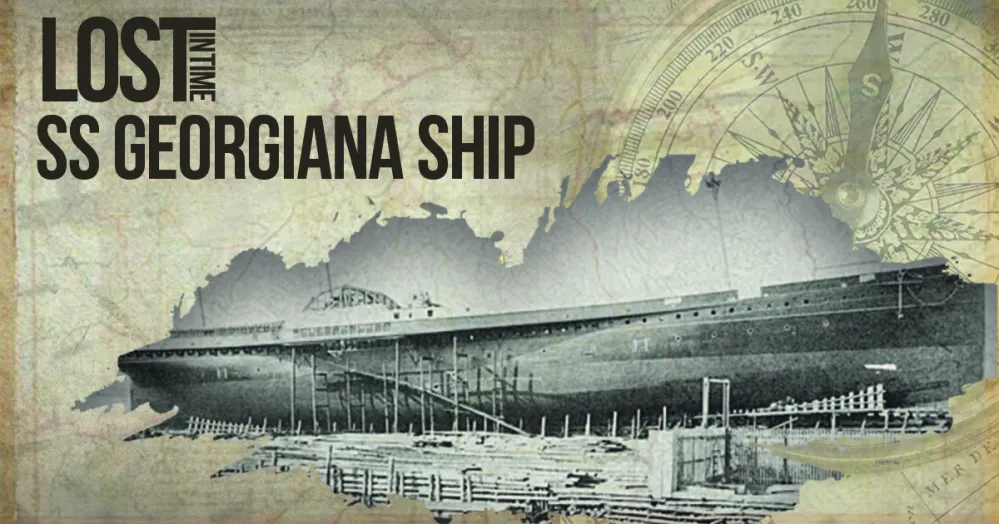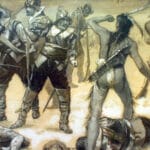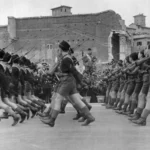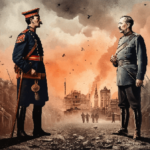Hey there, history buffs! Get ready to dive into the amazing stories that have happened on March 19th throughout the ages. From epic events that changed the world to mind-blowing moments in culture, this journey through time is guaranteed to keep you captivated. Join us as we explore the ups and downs, the triumphs and heartbreaks, and the downright weird stuff that has made this day so darn memorable. Let’s uncover the secrets of March 19th and discover how it has shaped the world we live in.
March 19th: All the Cool Facts and Events That Went Down in History
March 19th! Sounds like just another day, right? Well, think again! Over the years, this date has seen its fair share of crazy happenings, big breakthroughs, and moments that made history. Let’s dive into some of the most interesting stuff that went down on March 19th!
For the History Buffs:
- 1915: Bruce Willis, the action hero himself, was born. You probably know him from movies like “Die Hard” and “The Sixth Sense.”
- 1945: The Battle of Iwo Jima, a really intense fight in World War II, finally ended. This one was a big deal in the Pacific.
- 1962: Bob Dylan released his first album, marking a pivotal moment in folk music history. He went on to become a legend.
- 1979: For the first time ever, people could watch the U.S. House of Representatives do their thing on TV! Talk about bringing politics to the living room!
- 2004: Ireland decided cigarettes were so over, they banned smoking in workplaces. It was a bold move that other countries started watching closely.
Science Geeks, This One’s For You:
- 1913: Niels Bohr, a super-smart physicist, blew everyone’s minds with his ideas about how atoms work. We’re talking about quantum mechanics, the really weird world of tiny particles!
- 1978: The world met Louise Brown, the first-ever “test-tube baby.” It was a huge moment for science and for couples struggling to have kids.
- 2008: NASA’s Messenger spacecraft was like, “Mercury, here I come!” It went on a mission to explore that little planet and sent back some awesome pictures.
- 2013: Astronomers were freaking out because they found a planet called Gliese 163c. This one might, just might, be able to support life!
- 2020: Remember the Large Hadron Collider, that giant science experiment? Well, it found something called a pentaquark, a particle made up of five quarks. Yeah, it’s pretty complicated stuff.
Politics and Power Plays:
- 1946: Winston Churchill, the British Prime Minister, gave his famous “Iron Curtain” speech. He talked about how Europe was divided between the communist East and the democratic West. Heavy stuff!
- 1987: Teodoro Obiang Nguema Mbasogo took control of Equatorial Guinea, changing the course of the country’s politics.
- 1994: After a long and terrible war in Bosnia, the Dayton Agreement was signed, bringing a much-needed peace to the region.
- 2011: A brutal civil war broke out in Syria, causing unimaginable suffering and displacement.
- 2017: Marine Le Pen, a nationalist leader in France, gained a lot of support in the presidential election, showing how popular nationalist ideas were becoming around the world.
Pop Culture and Entertainment:
- 1813: Get ready for some drama! Pyotr Ilyich Tchaikovsky, the genius behind ballets like “Swan Lake” and “The Nutcracker,” was born.
- 1895: The Lumière brothers were like, “Hold our beers,” and showed off their invention, the cinematograph. Bam! Movies were born!
- 1963: Alfred Hitchcock, the master of suspense, gave us “The Birds,” a movie that still makes people afraid of our feathered friends.
- 1994: “Four Weddings and a Funeral” hit theaters and became a huge hit. It’s a rom-com classic!
- 2013: Remember “Twitch Plays Pokémon”? Thousands of people online were trying to play the same Pokémon game at the same time. It was total chaos, and the internet loved it!
What Happened This Day in History on March 19th?
This day isn’t just another date on the calendar. It’s a treasure chest full of stories, some of triumph, some of tragedy, but all of them weaving together to form the tapestry of our past. From sunken ships laden with secrets to the roar of crowds witnessing history in the making, March 19th has seen it all.
A Ship, a Storm, and a Secret Lost to the Sea
Imagine the year is 1863. The American Civil War is raging, and the Confederate ship SS Georgiana, brand new and loaded to the brim with weapons and supplies, sets sail on her maiden voyage. This wasn’t just any delivery; this was a lifeline for the Confederacy. But the sea, as we know, can be a fickle mistress. A storm brewed, a storm so fierce that it swallowed the Georgiana whole, taking her precious cargo and the secrets she held to the bottom of the ocean. Even today, some believe she lies somewhere off the coast of South Carolina, a ghost ship guarding a treasure trove of Confederate history.
A Day for Women, A March Towards Equality
Fast forward to 1911, and the world witnesses the very first International Women’s Day. Picture this: over a million people, women and men who believed in a better, fairer future, taking to the streets in a global symphony of voices demanding equal rights and the right to vote. This wasn’t just a day; it was a promise whispered on the wind, a promise of a world where gender wouldn’t be a cage but a key.
A Speck of Light, A Giant Leap for Astronomy
Now, let’s turn our gaze to the stars. In 1915, a young astronomer named Clyde Tombaugh aimed his telescope at the night sky and captured a faint, blurry image. That image, my friends, was Pluto, a tiny world billions of miles away. At the time, they called it the ninth planet, and while our understanding has evolved since then, that discovery opened up our cosmic neighborhood and sparked our imagination about the mysteries lurking in the darkness.
The Court Becomes a Battleground, A Victory for the Ages
For our final stop on this journey through time, we land in 1966. The stage is set: the NCAA Men’s Basketball Championship. The contenders: the Texas Western Miners, an all-black team, facing off against the Kentucky Wildcats, an all-white team in an era where the sting of segregation was still painfully real. This wasn’t just about basketball; this was about dignity, about equality, about the audacious belief that color shouldn’t define a person’s potential. And against all odds, the Miners triumphed, their victory echoing far beyond the basketball court, a slam dunk against racism and a beacon of hope for a more inclusive future.
March 19th: A Tapestry of Time
So there you have it, just a glimpse into the momentous events of March 19th. Each year, as this date rolls around, it’s a chance for us to remember, to reflect, and to appreciate how these events, both large and small, have shaped the world we live in today. It’s a reminder that history isn’t just dusty textbooks; it’s alive, it’s vibrant, and it’s still being written today.
Is There Anything Special on March 19th?
So, you’re curious about March 19th? It might not be as flashy as some other dates, but it’s got its own little quirks and historical moments that make it worth a second look.
Think about this: remember how the US finally got its act together with time zones? Yeah, that all kicked off on March 19th! Back in 1883, they decided enough was enough with everyone running on their own clocks. It’s a bigger deal than you might think – imagine trying to catch a train before standardized time!
And speaking of things changing the world, March 19th, 1911, was when the very first International Women’s Day rally took place. It was a powerful moment for women fighting for their rights, and it’s still something we celebrate and reflect on today.
But let’s not forget the fun stuff! For all you foodies out there, March 19th is National Chocolate Caramel Day. Yep, a whole day dedicated to that perfect combo of sweet and salty, gooey and decadent. Go ahead, treat yourself – you deserve it!
Now, if you’re a history buff, you might know that March 19th has seen its share of drama. It’s the anniversary of explorer La Salle’s unfortunate demise at the hands of his own crew back in 1687. On a lighter note, it’s also the birthday of the great composer Joseph Haydn – his masterpiece “The Creation” premiered on this day in 1799. And who could forget Harry Houdini, the legendary magician and escape artist, also born on March 19th?
But March 19th isn’t just about the past – it’s a day for scientific discoveries too! In 1915, astronomers managed to snap the very first photo of Pluto, which was a pretty big deal back then. Of course, now we know Pluto’s been demoted to a dwarf planet, which just goes to show how much we’re still learning about the universe.
So, there you have it! March 19th might not be packed with fireworks and parades, but it’s a date with its own unique character. From historical turning points to sweet celebrations and scientific milestones, it’s a reminder that every day has a story to tell.
What Happened on This Day in Music History, March 19th?
Alright, music buffs, let’s dive into the treasure chest of musical memories from March 19th. This date is bursting with remarkable events that left their mark on the music scene. We’re talking chart domination, legendary debuts, and even the early whispers of iconic collaborations!
50 Cent Rules the Charts (March 19, 2005)
Remember when 50 Cent was absolutely everywhere? Well, on this day in 2005, he did something truly extraordinary. He became the first solo artist in history to completely take over the top three spots on the US Top 5 singles chart. Can you imagine the power? “Candy Shop”, “How We Do”, and “Disco Inferno” were blasting from every speaker, cementing his place as a rap titan.
Bob Dylan: The Birth of a Folk Icon (March 19, 1962)
Let’s rewind to 1962 when a young Bob Dylan released his very first album. This self-titled record wasn’t just a collection of songs; it was a cultural earthquake. With his deeply personal lyrics and soulful melodies, Dylan sparked a folk music revival that resonated throughout the 1960s and beyond. It’s hard to imagine the landscape of folk music without this pivotal moment.
Before Simon & Garfunkel, There Was… Tom & Jerry? (March 19, 1958)
Okay, this one’s a real trip. Before they were the legendary Simon & Garfunkel, Paul Simon and Art Garfunkel were just two guys named… Tom and Jerry! On this day, they released a little ditty called “Our Song.” It might not have been a chart-topper, but it marked the very beginning of one of music’s most celebrated partnerships. Who knew those early days held such promise?
“Redhead” Takes Center Stage (March 19, 1960)
Hold onto your hats, Broadway fans! On this day in 1960, the musical adaptation of Jane Austen’s “Pride and Prejudice,” cleverly titled “Redhead,” danced its way onto the Broadway stage. Starring the incredible talents of Gwen Verdon and Richard Kiley, “Redhead” wasn’t just a hit; it became a sensation, snagging a remarkable six Tony Awards, including the coveted Best Musical. Talk about a triumphant debut!
What Happened on March 19th in Pop Culture History?
So, we’ve already dug into some other cool stuff that went down on this date, but guess what? There’s even more to uncover! March 19th also happens to be the birthday of some seriously big names like Bruce Willis and Glenn Close. Oh, and let’s not forget about Patrick McGoohan, the mastermind behind the mind-bending show “The Prisoner.” Talk about a star-studded lineup!
Now, let’s rewind the clock and see what else went down on this fateful day throughout history. Back in 1962, a young Bob Dylan dropped his very first album. It wasn’t a chart-topper or anything, but it marked the beginning of a musical journey that would change folk and pop music forever.
Fast forward to 1993, and things get a little heavier. March 19th marked the start of Operation Iraqi Freedom, a moment in history with far-reaching consequences that continue to be debated and analyzed today.
But hey, let’s lighten the mood a bit! In 1998, the dazzling revival of “Cabaret” hit the Broadway stage. This show, with its catchy tunes and thought-provoking themes, became a massive success and reminded everyone of the power of live theater.
And speaking of legendary moments, did you know that Elvis Presley, the King himself, bought Graceland on March 19th, 1957? Yep, that iconic mansion, a symbol of rock and roll extravagance, became Elvis’s very own palace on this very day.
Now, for something a little different. Ever heard of the swallows of Mission San Juan Capistrano? Every year, like clockwork, these little birds return to the Mission in California on March 19th. It’s been happening since at least 1918, and some folks say even longer! This incredible display of nature’s rhythm became a symbol of spring’s arrival and a reminder that we’re all connected, even with tiny, feathered friends.
Key Takeaways:
- March 19th is jam-packed with pop culture goodness, from celebrity birthdays to historical turning points.
- Bob Dylan’s musical journey, which began on this date, shows how one album can spark a revolution in an entire genre.
- The return of the swallows to Capistrano is a beautiful example of how nature and culture intertwine, reminding us that some things transcend the hustle and bustle of our daily lives.
Who Is Remembered on March 19th?
We’ve already talked about some pretty important folks born on March 18th, but March 19th? It’s got its own share of fascinating figures who deserve a spot in our memories. This day brings together a mix of names from the bright lights of Hollywood to the quiet labs of scientists, all the way to the history books that shaped our world.
Think Bruce Willis, the tough-guy actor who made “Yippee-ki-yay!” a catchphrase, was born on this day. But it’s not just about action heroes. March 19th also marks the birth anniversary of Pyotr Ilyich Tchaikovsky, the musical genius behind iconic ballets like “Swan Lake” and “The Nutcracker”—talk about range!
Speaking of groundbreaking, March 19th, 1978, saw the birth of Louise Brown, the world’s first “test-tube baby”. Her arrival signaled a massive leap forward in reproductive technology, giving hope to countless families.
Sadly, March 19th is also the anniversary of Albert Einstein’s death in 1955. This scientific giant, with his wild hair and even wilder ideas, changed how we see the universe, and his work continues to inspire new generations of thinkers.
Beyond individual lives, March 19th marks significant historical events. In 1945, the brutal Battle of Iwo Jima ended on this day, a turning point in World War II’s Pacific theater. Years earlier, on March 19, 1919, the Treaty of Versailles was signed, officially ending World War I, but, as we know, also setting the stage for future conflicts.
Who Was Born on March 19th?
March 19th is like a day for cake and confetti because some pretty awesome people were born on this day! We’re talking game-changers and trendsetters, folks who made their mark on the world in a big way.
Think about Bruce Willis, the guy who pretty much defines “action hero”. And then there’s Glenn Close, an actress who can go from charming to chilling in a heartbeat. And if you’re a sports fan, you know Clayton Kershaw, the pitcher who’s practically a magician on the mound.
But wait, there’s more! March 19th is also a big day for music lovers. We’re talking about Pyotr Ilyich Tchaikovsky, the musical genius behind ballets like “Swan Lake.” And speaking of music, let’s not forget FLETCHER, the singer-songwriter whose raw and honest lyrics have connected with a whole new generation.
But it’s not all about entertainment on this day. March 19th has also given us some pretty influential figures in the world of politics. Earl Warren, who served as Chief Justice of the United States, was born on this day. He was responsible for some major decisions that shaped the country’s legal system. And then there’s William Jennings Bryan, a powerful voice in the Democratic party who ran for president three times – definitely a force to be reckoned with.
There are probably tons of other fascinating people who were born on March 19th just waiting to be discovered.
What Happened on 19 March 2024?
March 19, 2024, was a day of significant happenings around the globe. China made a big splash in the space race, Finland held onto its happiness crown, and the worlds of philanthropy and entertainment saw some notable moments.
Reaching for the Stars
China took another giant leap on March 19th by launching the Queqiao-2 relay satellite. Think of it as a kind of messenger in space, helping future lunar missions communicate back home. This launch shows just how serious China is about exploring the moon and beyond. Some experts even believe this puts them in a strong position to potentially lead the way in future lunar discoveries.
The Finnish Formula for Happiness
For those keeping score, Finland remained the happiest country in the world! This isn’t a fluke; they’ve consistently ranked highly. While the exact reasons are complex, it suggests that Finland’s focus on things like social support, healthcare, and work-life balance might just be a recipe for a contented population.
MacKenzie Scott’s Amazing Generosity
MacKenzie Scott, known for her incredible philanthropy, continued her giving streak. On this day, she donated a whopping $640 million to various non-profit organizations doing vital work in areas like education and social justice. It really highlights how individuals can make a monumental difference in tackling the world’s challenges.
A Farewell to a Cinematic Icon
Sadly, the world of film lost a true talent. M. Emmet Walsh, a character actor beloved for his roles in movies like “Blood Simple” and “Blade Runner,” passed away. He left behind an impressive body of work that brought countless characters to life, reminding us of the power of storytelling through performance.
A Glimpse into a Day in History
March 19, 2024, reminds us that even amidst the everyday, history is constantly unfolding. From scientific advancements to acts of kindness and the legacies we leave behind, each day adds a new thread to the intricate tapestry of human experience.
What Happened on March 19, 1938?
It’s March 19, 1938. German troops cross the border and begin occupying Austria. This wasn’t just a random act of aggression; it was the start of what historians call the Anschluss – Hitler’s plan to absorb Austria into Nazi Germany.
Within weeks, Austria, once an independent nation, was no more. It became just another part of Germany, swallowed up by the Nazi regime.
This event sent shockwaves across the globe. Countries like France, the UK, and the US were deeply troubled. They condemned the invasion, recognizing it for what it was: a blatant land grab that shattered international law and peace.
The League of Nations, the closest thing the world had to a peacekeeping organization back then, tried to intervene. They denounced the Anschluss and booted Austria from their membership. But without a strong military force to back up their words, their actions were largely symbolic.
Looking back, the Anschluss stands as a chilling reminder of the dangers of unchecked ambition and appeasement. It showed the world just how far Hitler was willing to go to achieve his goals. Many historians believe this event played a crucial role in the lead-up to World War II, increasing tensions in Europe and emboldening Hitler to pursue even more aggressive expansionist policies.
Here’s what you should remember about March 19, 1938:
- German troops invaded and occupied Austria.
- This marked the beginning of the Anschluss, the annexation of Austria into Nazi Germany.
- The annexation was swift, completed in less than a month.
- The international community widely condemned the Anschluss.
- The event heightened fears of further German aggression.
While we know a lot about the Anschluss, research and debate about its complexities continue. For example, historians still explore the level of support, if any, that existed within Austria for Hitler’s annexation. Understanding the nuances of this event helps us better grasp the factors that led to World War II and the devastating consequences of unchecked tyranny.
What Happened on March 19, 1918?
March 19th wasn’t just about time zones; it was a pivotal moment in how the U.S. government interacted with something we often take for granted—time itself.
The U.S. Gets a Grip on Time
Imagine a time before standardized time zones. Chaos! That’s what the U.S. was like before March 19, 1918. Railways had their own time systems, towns often went by solar time, and coordinating anything across the country was a nightmare. The Standard Time Act of 1918 aimed to fix this. Passed by Congress, this law carved up the nation into five distinct time zones: Eastern, Central, Mountain, Pacific, and Alaska. It’s hard to overstate how big a deal this was. Suddenly, train schedules made sense, long-distance communication became more reliable, and businesses could operate with a new level of efficiency. This was especially crucial during World War I, as coordinating troop movements and supplies became infinitely smoother.
Let There Be (More) Daylight!
But wait, there’s more! Not content with just standardizing time zones, the Standard Time Act also introduced the concept of Daylight Saving Time (DST) to the U.S. – a move many folks at the time found pretty radical! Starting on March 31, 1918, Americans sprang forward an hour, effectively squeezing more daylight hours into their summer days. The main goal? Save energy! With longer daylight hours, the need for artificial lighting decreased, which was a big deal during wartime when resources were precious.
A Deeper Look at the “Why”
To truly grasp the significance of March 19, 1918, we need to consider the context. World War I was raging, and efficiency was paramount. Standardized time zones were like the oil that kept the war machine running smoothly. DST, though initially met with some resistance, quickly proved its worth in conserving energy and boosting productivity. Think about it: more daylight meant more time for factory work, agricultural production, and even just enjoying leisure activities. The changes weren’t just about clocks; they were about adapting to the demands of a world at war and, in many ways, helped lay the groundwork for the U.S.’s emergence as a global power in the 20th century.
What Happened on March 19, 1942?
March 19, 1942, was a day marked by conflict and change. Imagine the world engulfed in World War II, tensions running high, and the fate of nations hanging in the balance.
Over in Crimea, a peninsula jutting out into the Black Sea, the Red Army was making its move. They launched an offensive against the German forces who had been occupying the region. The goal? To take back this strategically vital area. Now, historians believe this operation was a pivotal moment on the Eastern Front, potentially shifting the momentum of the war.
Meanwhile, the city of Leningrad remained trapped under siege by the Germans. Picture this: for 22 long months, the people of Leningrad endured unimaginable hardships, their resilience a testament to the human spirit. It’s a stark reminder of the human cost of war.
Across the Atlantic, President Roosevelt, recognizing the enormity of the situation, issued an order for all American men between 45 and 64 to register for non-military duty. This mobilization of manpower, while seemingly less dramatic than sending troops, was a clear signal: the United States was fully committed to the war effort.
Now, amidst all the chaos, something rather unexpected occurred in Chicago. A group of people gathered to establish the Thoroughbred Racing Association of the United States. It might seem strange, this focus on horse racing during such a tumultuous time, but it speaks to the enduring human need for normalcy and entertainment, even in the darkest of times.
Unfortunately, the day wasn’t without its share of tragedy. A Japanese air raid struck the Australian town of Broome, targeting the airfield and harbor. The attack, which some historians believe aimed to disrupt Allied operations in the Pacific, serves as a stark reminder that the war’s reach was vast and its consequences far-reaching.
It’s easy to look back at historical events as isolated incidents, but days like March 19, 1942, remind us that history is a complex tapestry woven from threads of war, resilience, and even unexpected moments of hope.
- Unlock Filipino Culture: A Deep Dive into Traditions and Practices - April 23, 2025
- Unlock Spanish Culture: Insights & Opportunities Now - April 23, 2025
- White Spirit Uses & Substitutes: A Deep Dive for Pros & DIYers - April 23, 2025
















